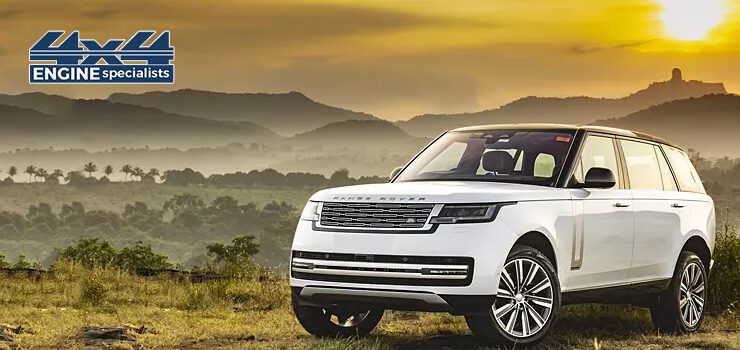The Range Rover 3.0 engine is designed to provide exceptional performance across various driving conditions and styles. This advanced engine offers a balance between power and efficiency, making it adaptable to both urban environments and off-road terrains. We will explore how the Range Rover 3.0 engine adjusts to different driving styles, with a focus on its technical advancements and performance features. We will also examine its role in the broader context of engine replacement, reconditioned engines, and supply and fit services.
The Range Rover 3.0 engine is one of the most versatile and powerful engines in the automotive industry. With its sophisticated design and advanced technology, it provides a seamless driving experience for both casual drivers and enthusiasts who prefer more demanding terrains. This engine is designed to adjust to different driving modes and styles, ensuring a smooth, powerful, and efficient performance in any situation. From city driving to long-distance road trips and off-road adventures, the Range Rover 3.0 engine can adapt to diverse conditions.
Dynamic Mode: Prioritizing Performance for Sporty Driving
Dynamic mode in the Range Rover 3.0 engine is tailored for drivers who crave high-performance and responsive handling. This driving mode enhances throttle response, sharpens steering sensitivity, and increases gear-shifting speed. The engine’s power is optimized to deliver more aggressive acceleration, allowing the driver to enjoy a thrilling experience.
The suspension system is also adjusted in dynamic mode to lower the vehicle, reducing body roll during high-speed cornering. The Range Rover 3.0 engine utilizes turbocharging to provide a quick power boost while maintaining engine efficiency. Drivers who enjoy a sporty driving style will find this mode enhances the engine’s capability by delivering faster response times and heightened control.
In the context of engine replacement and reconditioned engines, maintaining these performance capabilities requires expert service providers who specialize in supply and fit services. Proper installation ensures that the engine retains its dynamic characteristics post-replacement.
Eco Mode: Maximizing Fuel Efficiency
Eco mode is ideal for drivers who prioritize fuel efficiency and want to reduce their environmental footprint. In this mode, the Range Rover 3.0 engine optimizes fuel consumption by adjusting throttle sensitivity and modifying the gear-shifting pattern for lower RPMs. The engine’s power is deliberately reduced to prioritize fuel savings, which is particularly useful during city driving and stop-and-go traffic.
The 3.0 engine’s start/stop feature also contributes to improved efficiency by turning off the engine during idling and restarting it when the driver is ready to move. This system saves fuel while reducing emissions. For drivers looking to maximize eco-friendliness without sacrificing performance, Eco mode provides the ideal balance.
Engine replacement for fuel efficiency-related issues often involves upgrading to reconditioned engines that have been fine-tuned to meet high eco-standards. Supply and fit services ensure that the installation of reconditioned engines matches the vehicle’s fuel-saving goals.
Comfort Mode: Smooth and Balanced Driving Experience
Comfort mode in the Range Rover 3.0 engine is designed for relaxed, everyday driving. The engine adjusts its power delivery to prioritize a smooth and balanced ride, which is perfect for city commutes or long road trips. Throttle response is moderated, and the transmission shifts seamlessly to provide a comfortable driving experience without abrupt power surges.
In Comfort mode, the suspension system adapts to provide a cushioned ride, ensuring passengers feel minimal impact from bumps and uneven road surfaces. This mode emphasizes the Range Rover’s luxurious driving experience, where power is delivered gradually, ensuring a calm, composed ride.
For those considering engine replacement or reconditioned engines, ensuring that the engine maintains its comfort-driven settings requires skilled technicians. Supply and fit services guarantee that the reconditioned engine performs optimally for comfortable, everyday driving.
Off-Road Mode: Adapting to Rough Terrains
Off-road mode is where the Range Rover 3.0 engine truly shines, showcasing its ability to tackle rough and unpredictable terrains. This mode increases torque and adjusts power delivery to ensure that the vehicle can handle steep inclines, deep mud, or rocky landscapes. The 3.0 engine works in tandem with the vehicle’s four-wheel-drive system to maintain optimal traction and control on uneven surfaces.
The turbocharger in the Range Rover 3.0 engine provides consistent power, allowing the vehicle to navigate challenging terrains effortlessly. Additionally, the suspension system raises the vehicle’s height for better ground clearance, enabling the engine to push through obstacles without compromising performance.
Engine replacement or reconditioned engines for off-road vehicles often requires specialist knowledge, as the engines need to maintain high torque output. Supply and fit services ensure that the reconditioned engine is installed correctly to maintain off-road performance.
Snow and Ice Mode: Enhancing Traction in Slippery Conditions
For drivers in colder climates, Snow and Ice mode in the Range Rover 3.0 engine ensures safe and controlled driving on slippery surfaces. In this mode, the engine adjusts its power delivery to prevent wheel spin and loss of control. The traction control system works closely with the engine to distribute power evenly between the wheels, providing the grip needed for snow-covered or icy roads.
The Range Rover 3.0 engine’s adaptive throttle response and slow gear-shifting in Snow and Ice mode prioritize stability over speed, allowing the driver to maintain control in treacherous conditions. Safety features like anti-lock braking systems (ABS) and electronic stability control (ESC) further enhance the vehicle’s ability to navigate slippery roads.
Reconditioned engines and engine replacement options must be carefully selected to ensure compatibility with Snow and Ice mode. Supply and fit services help ensure that the reconditioned engine provides the necessary power and traction for winter driving.
Towing Mode: Maximizing Torque for Heavy Loads
Towing mode is designed for situations where the vehicle is tasked with pulling heavy loads, such as trailers, boats, or other vehicles. The Range Rover 3.0 engine adapts by increasing torque output and modifying its transmission to handle the additional weight. In this mode, the engine prioritizes power delivery to ensure smooth acceleration and stability while towing.
The 3.0 engine’s turbocharger plays a crucial role in maintaining power output, even under the strain of heavy loads. This ensures that the vehicle can maintain consistent speed and control, whether driving on highways or off-road.
When considering engine replacement or reconditioned engines for towing purposes, it’s essential to choose a provider who understands the specific torque requirements. Supply and fit services guarantee that the engine is equipped to handle the demands of towing
Aerodynamics: Designing for Less Resistance
Sport mode is for drivers who prefer aggressive, fast-paced driving. In this mode, the Range Rover 3.0 engine increases throttle sensitivity, allowing for quick acceleration. The turbocharger provides an extra power boost, enabling the vehicle to reach higher speeds in a shorter time. The suspension system lowers the vehicle for better aerodynamics, and the transmission shifts faster to maintain high engine RPMs.
This mode also enhances the engine’s exhaust note, providing a more exhilarating driving experience. Sport mode is perfect for highway driving or situations where the driver wants to take full advantage of the engine’s power.
Engine replacement for performance-related issues can be solved with reconditioned engines that meet high-performance standards. Supply and fit services ensure that the installation process retains the vehicle’s sporty characteristics.
Terrain Response: Automatic Adaptation to Varying Conditions
One of the most impressive features of the Range Rover 3.0 engine is its Terrain Response system, which automatically adjusts the engine’s performance based on the driving environment. This system uses sensors to detect changes in terrain and weather conditions, and the engine adapts by modifying power delivery, throttle response, and suspension settings.
Whether driving through sand, mud, gravel, or wet roads, the Range Rover 3.0 engine ensures optimal performance by making real-time adjustments. This feature enhances the vehicle’s ability to transition between different terrains seamlessly.
Reconditioned engines that are equipped with Terrain Response require precise installation to ensure that the sensors and systems communicate correctly. Supply and fit services provide the necessary expertise to maintain this automatic adaptation feature.


